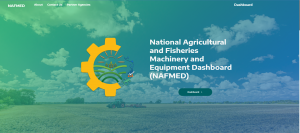QUEZON CITY – The Department of Agriculture – Bureau of Agricultural and Fisheries Engineering (DA-BAFE) spearheaded a workshop concerning the crucial role of manpower in the country’s agricultural and fishery sector.

Various stakeholders, including government agencies, local government units (LGUs), regulatory bodies, professional organizations, and state universities and colleges (SUCs), collaborated from October 18 to 20, 2023 for the development of a roadmap in support to the agri-fishery sector’s workforce.
Participants in this three-day event include representatives of the Philippine Society of Agricultural and Biosystems Engineers (PSABE), Professional Regulation Commission (PRC), Regional Agricultural Engineering Divisions (RAEDs), LGU of Nueva Ecija, and Agricultural Training Institute (ATI), among others.
DA-BAFE Director Ariodear Rico, in his opening address, said that the event marked a shift from focusing on machines to focusing on people, asserting that “manpower is a critical factor in the implementation of agri-fishery machinery and facilities.” This collective effort highlights the essential role of skilled personnel in the agriculture and fisheries, he added.
One of the topics that Dir. Rico discussed was the Regional Comprehensive Economic Partnership (RCEP) Agreement, a trade deal that aims to lower tariffs and promote free trade among 15 countries in Asia-Pacific including the Philippines. The agreement, ratified by the Senate through Resolution No. 42, is expected to boost the country’s agricultural and fisheries sector by opening new markets and opportunities.
Several measures to enhance the competitiveness of the sector, such as developing and implementing programs to improve efficiency, productivity, and quality are outlined in the Senate Resolution. One of these programs is the Agricultural Machinery, Equipment, Facilities, and Infrastructure Program (AMEFIP), which seeks to modernize agricultural infrastructure, Dir. Rico explained.
Another measure is human capital development, which focuses on creating jobs and developing skills for the agri-fishery workforce. This includes agricultural and biosystems engineers (ABEs), machine technicians, and operators, who play indispensable roles in operating and maintaining machinery and facilities.
In line with these measures, Dir. Rico asserted the National Agriculture and Fisheries Modernization and Industrialization Plan 2021-2030 (NAFMIP) serves as President Ferdinand Marcos Jr. administration’s blueprint for increasing agricultural production through consolidation, modernization, mechanization, and value chain improvement, thus transforming the sector into a dynamic and resilient industry.
In support to NAFMIP, the DA through BAFE led the preparation of two major initiatives: the National Farm-to-Market Roads Network Plan (FMRNP) and the National Agricultural and Fishery Mechanization Program (NAFMP) 2023-2028. These initiatives aim to improve connectivity and accessibility for farmers and fishers, as well as provide them with appropriate machines and equipment.
The Renewable Energy Program for Agriculture and Fishery Sector (REPAFS), which received approval from the National Economic Development Authority (NEDA), is another key government intervention that DA-BAFE spearheaded in advancing the sector’s resilience and sustainability, Dir. Rico said. This program offers a sustainable solution to address the challenge of rising petroleum prices by using renewable energy sources such as solar, wind, hydro, biomass, and biogas, he added.
Efforts are also underway to harmonize irrigation programs through the localization of the National Irrigation Master Plan (NIMP). This initiative is vital in light of devolution, ensuring that irrigation programs are streamlined and efficient, said Dir. Rico.
Dir. Rico shared some insights on the demand and supply of ABEs in the country. Despite producing 12,551 registered and licensed ABEs in 2023, there is a shortage of ABEs due to some working abroad or shifting to other fields. He stressed the urgency of addressing this gap by attracting more students to pursue ABE courses and providing them with incentives and opportunities.
Regulatory framework governing agri-fishery machinery and facilities, include safety standards, testing procedures, accreditation processes, and certification requirements. These regulations are necessary to ensure quality and reliability of machines and facilities, Dir. Rico said.
Director Rico presented the workshop participants with an outline of a roadmap to support ABE manpower complement enforcement activities. This roadmap outline encompasses several key areas: 1) training regulations (implementing Section 13 of RA 10601, which focuses on ABE-TVET Training Regulations to produce more ABE trainers and assessors); 2) career progression (developing career paths and specializations for ABEs, including micro-credentialing); 3) signing and sealing (ensuring that plans, designs, and specifications of agri-fishery machinery and buildings are signed and sealed by ABEs; 4) function delineation (implementing the IRR of RA No. 10915, which delineates the functions of ABEs and Real Estate Appraisers/Assessors), 5) LGU positions (mandating provincial, city, and municipal agricultural and biosystems engineer positions in LGUs) and 6) digitalization (using planning tools and information systems such as ABEMIS and GEOAGRI).
While this workshop provided a platform to discuss and shape the future of the Philippine agricultural and fisheries sector’s manpower, the development of a roadmap signifies a concerted effort to create a more competitive, efficient, and sustainable industry, in alignment with national and international goals. The imperative to close the manpower gap and enhance the skills of ABEs is a cornerstone of this vision, setting the stage for a prosperous agricultural and fishery sector in the Philippines.
The workshop concluded with a synthesis of recommendations and action plans for enhancing the agri-fishery workforce, with the participants agreeing on the need to collaborate and coordinate among different stakeholders to achieve their common vision. ###(Marshall Louie Asis,MC /DA-BAFE)



 Please Subscribe
Please Subscribe

